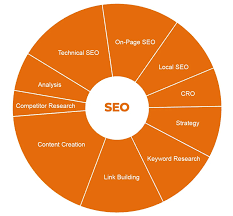The Meaning and Misconceptions of Homosexuality
Homosexuality is a sexual orientation characterized by romantic or sexual attraction between individuals of the same gender. It is a natural and normal variation of human sexuality that has been observed throughout history and across cultures.
Despite its prevalence, homosexuality has often been subject to misconceptions and stigmatization. Myths and stereotypes surrounding homosexuality have perpetuated discrimination and prejudice against individuals who identify as gay, lesbian, bisexual, or queer.
Dispelling Myths About Homosexuality
One common myth about homosexuality is that it is a choice or a lifestyle that can be changed. In reality, sexual orientation is a fundamental aspect of a person’s identity that is not chosen or easily altered. Research has shown that homosexuality is influenced by a combination of genetic, hormonal, and environmental factors.
Another misconception is that homosexuality is unnatural or immoral. However, scientific evidence supports the idea that same-sex attraction occurs naturally in a variety of animal species, not just humans. Furthermore, many religions and belief systems now recognize the dignity and rights of LGBTQ individuals.
Celebrating Diversity and Acceptance
It is essential to promote understanding and acceptance of diversity in sexual orientation. LGBTQ individuals deserve to live free from discrimination and prejudice, with the same rights and opportunities as everyone else.
By challenging stereotypes, educating others, and advocating for equality, we can create a more inclusive society where all individuals are respected for who they are. Embracing diversity in all its forms enriches our communities and fosters a culture of acceptance and love.
“The Origin and History of the Term ‘Homosexuality’”
“Common Examples of Homosexual Behavior”
4. “Exploring the Historical Emergence of Homosexuality
- What is a synonym for homosexual slang?
- When did homosexuality become a word?
- What are examples of homosexual acts?
- When did homosexuality start?
- What is the meaning heterosexuality?
- What are the 11 types of sexualities?
- What is the meaning of the word homosexualism?
- Who was the first Lgbtq Disney character?
What is a synonym for homosexual slang?
A commonly used synonym for homosexual in slang is “gay.” This term is widely recognized and embraced within the LGBTQ community as a positive and affirming way to describe individuals who are attracted to the same gender. The word “gay” has evolved over time to encompass a sense of identity, community, and pride among those who identify as such.
When did homosexuality become a word?
The term “homosexuality” was coined in the late 19th century by German-Hungarian physician Karoly Maria Benkert. It first appeared in an 1869 pamphlet written by Benkert, where he used the word “homosexualität” to describe same-sex sexual attraction. The concept of homosexuality as a distinct sexual orientation gained prominence in the medical and psychological fields during the late 19th and early 20th centuries, shaping societal attitudes and understanding of same-sex relationships. Since then, the word “homosexuality” has become a widely recognized term used to describe individuals who are romantically or sexually attracted to people of the same gender.
What are examples of homosexual acts?
Homosexual acts encompass a wide range of behaviors that involve romantic or sexual interactions between individuals of the same gender. Examples of homosexual acts can include kissing, cuddling, holding hands, engaging in sexual intercourse, and expressing affection and intimacy in ways that are typical of romantic relationships. It is important to recognize that these acts are natural expressions of love and desire among individuals who are attracted to others of the same gender. Understanding and respecting the diversity of human relationships, including homosexual acts, is crucial in promoting acceptance and equality for LGBTQ individuals.
When did homosexuality start?
The question of when homosexuality started is complex and multifaceted. Homosexuality, as a form of human sexual orientation, has existed throughout history and across cultures. Historical records and archaeological evidence suggest that same-sex relationships and attractions have been documented in various societies dating back thousands of years. It is important to recognize that homosexuality is a natural and diverse aspect of human sexuality that has been present since ancient times, challenging the notion that it is a modern phenomenon or cultural trend. Understanding the historical context of homosexuality helps to dispel myths and misconceptions surrounding its origins and highlights the enduring presence of LGBTQ individuals in society.
What is the meaning heterosexuality?
Heterosexuality refers to a sexual orientation characterized by romantic or sexual attraction between individuals of the opposite gender. It is the most common sexual orientation among individuals, and it is often considered the societal norm in many cultures. Heterosexual relationships typically involve emotional and physical intimacy between a man and a woman. Just as with homosexuality, heterosexuality is a natural variation of human sexuality, reflecting the diverse ways in which individuals experience love and attraction. Understanding and respecting different sexual orientations, including heterosexuality, is essential for promoting inclusivity and acceptance within society.
What are the 11 types of sexualities?
There is a wide spectrum of sexual orientations beyond the traditional heterosexual and homosexual categories. The 11 types of sexualities include heterosexual, homosexual, bisexual, pansexual, asexual, demisexual, graysexual, queer, questioning, sapiosexual, and skoliosexual. Each of these sexual orientations represents a unique way in which individuals experience attraction and form relationships. Understanding and respecting the diversity of sexualities is crucial in creating an inclusive and accepting society where everyone can live authentically and without fear of discrimination.
What is the meaning of the word homosexualism?
The term “homosexualism” is often used as a variant of “homosexuality,” referring to the sexual orientation characterized by romantic or sexual attraction between individuals of the same gender. However, it is important to note that “homosexualism” is not a widely recognized or commonly used term in contemporary discussions on sexual orientation. The preferred and more accepted term is “homosexuality,” which accurately describes the natural and diverse expression of same-sex attraction in individuals. It is essential to use language that is respectful and inclusive when discussing topics related to sexual orientation and identity.
Who was the first Lgbtq Disney character?
The question of who was the first LGBTQ Disney character is a topic of much discussion and speculation among fans and scholars alike. While Disney has featured characters with ambiguous or coded LGBTQ traits in the past, such as Ursula from “The Little Mermaid” or LeFou from “Beauty and the Beast,” there has yet to be an openly LGBTQ character in a Disney animated film. The representation of LGBTQ characters in mainstream media, including family-oriented content like Disney films, remains a subject of ongoing debate and progress towards more diverse and inclusive storytelling.







Leave a Reply